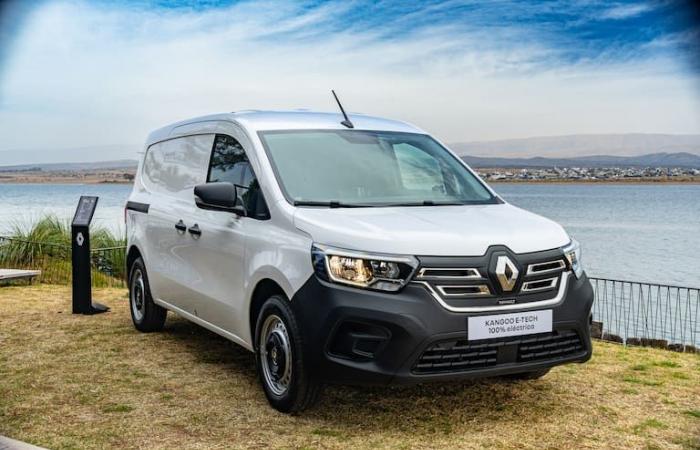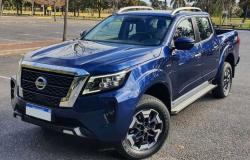Hear
The French house has been talking about electrification for quite some time and acts accordingly. The first specific models – mass-produced and available on the market – carried the surname ZE, derived from Zero Emission (or “zero emissions”) and animated both the Fluence range, as well as Zoe, Twingo, Twizy and also Kangoo, the only product of that species to reach our country. In fact, in 2018, that edition of the utility vehicle was a pioneer in the Argentine market by becoming the first completely electric model available to the public.
Further back in time, the term “Renaulution” appears, which would mark the beginning of a new era divided into 3 stages or phases: Resurrection, Renewal and Revolution. The first focused on reducing costs, recovering margin and generating more revenue; the second aims to renew and enrich the product ranges, fueling the profitability of all the Group’s brands; while the third covers everything related to reorienting the current business model towards the advances offered by technology, energy and mobility.
In other words, a strategic plan to carry out a profound transformation of its business model, within which electromobility plays a key role. And as part of the global spillover of the plan, last December – during the so-called E-Tech Days – when the local subsidiary presented its electric triad to society with the promise of a staggered and short-term launch: “Three electric vehicles in less than three months”, and so it was that in December it launched the pre-sale of the Kwid E-Tech, to formally put it on sale on March 18; On April 23 it was the turn of the Megane E-Tech, and now it is time for the Kangoo E-Tech which, based on the third generation of the successful model, improves in everything compared to the previous one: load capacity, power, autonomy and equipment.
The brand announces that with this light commercial they put on the market a “renewed electric mobility solution for companies and institutions that aim to reduce the environmental impact through the electrification of the fleet.” Of course, beyond everything romantic that sounds, the statement must be materialized in a vehicle that offers agile delivery, that is versatile, comfortable and with the lowest possible cost per kilometer traveled. YesOur proposal is this model that experienced a notable evolution with respect to the ZE, of which 110 units were sold in Argentina.
Specific, This new 100% electric Kangoo has a 90 kW engine that is equivalent to 120 HP (60 HP in the previous one) and 245 Nm of torque, available instantly. It is powered by a 45 kWh lithium-ion battery, made up of eight independent modules (allowing separate repair) which, according to official data, guarantees a range of 300 km (260 in the previous one) as established by WLTP approval. Compared to its predecessor, this battery gains 12 kWh, has liquid cooling and also manages to extend the warranty from five to eight years or 120,000 kilometers.
In the Eco (the other is Normal), it limits the power and maximum speed to collaborate with the optimization of general autonomy. At the same time, the driver can choose between three levels of regenerative braking: Level 1 (indicator light B1) activates limited regeneration, more suitable for driving on highways and expressways; Level 2 (B2) is an intermediate mode with responses similar to those of a combustion engine when stepping on the accelerator; while Level 3 (B3) applies maximum regeneration, suitable for traffic jams, mountain roads or slopes.
The system with which the vehicle comes equipped is compatible with different types of charging stations, whether in commercial premises, public charging points or in domestic wallboxes. Therefore, The options range from single-phase recharging (AC 7.4 kW) in a domestic charger, through three-phase (AC 22 kW), to fast DC (80 kW) direct current. According to the brand, connected to a 7.4 kW wallbox it takes less than six hours to go from 15 to 80%, and only 30 minutes plugged into a public 80 kW “supply”.
Hand in hand with this launch and through the Mobilize Power Solutions division, the brand puts single-phase personal chargers (7.4 kW), three-phase business chargers (22 kW) and chargers on sale throughout the official dealer network. portable devices (with 220 V household outlet) that will have the option of being financed by Mobilize Financial Services in 12 interest-free installments. Regarding semi-public charging, the Mobilize Charge Pass membership is discounted for 6 months for all E-Tech customers, a product launched in conjunction with the company Chargebox net, which currently has a charging network of more than 60 points and which by the end of 2024 it plans to extend to 150.
From its exterior aesthetics, the design language seen in other recent generation Renaults can be seen, especially for the lighting signature with LED trim for the daytime running lights that merge with the grille lips. It has chrome appliqués that decorate the nose, completed by a robust black plastic bumper that matches the mirror housings. Due to its soft lines and shapes that give it fluidity, it is a bit different from the classic square shapes typical of cargo vans. It has 16″ wheels, while the rear part expresses a more solid appearance and, with a wider track than the previous one, manages to offer more cargo space. The lights in that sector are also LED.
The cabin has correct finishes and well-presented inserts, in addition to the fact that everything is covered in rigid plastics, without soft parts. It has completely redesigned seats, more comfortable and resistant than the previous ones, while the steering wheel is adjustable in height and depth.
The interior was configured with ergonomics in mind and without neglecting functionality, as it offers 44 liters among the various storage spaces, from the roof tray (with 21.8 liters) to the central panel recess, the door compartments, one exclusive to the driver’s side, among others.
In the cargo area it offers a space of 4.3 m³, its maximum useful capacity is 800 kg (150 kg more than the Kangoo ZE), and the towing capacity reaches 1,500 kg. The sliding side door provides convenience in the task of loading and unloading, or access to that area that measures 2.2 meters long, 1.5 meters wide and 1.3 meters high. The cargo area has 1/3 – 2/3 rear doors that can open from 90° to 180°, facilitating access even when there is little free space.
The model that arrives imported from France offers as highlighted items the Easy Link multimedia system with 8-inch touchscreen including rear parking camera, Android Auto and Apple CarPlay compatibility, which allows access to applications, GPS navigation and voice commands; automatic climate control; rear parking sensors, and tire pressure monitoring system. The instrument panel has a 4.2-inch color digital panel that gathers information from the on-board computer, such as that related to the selected driving mode and electrical energy management.
The cargo area includes double lighting and eight fixing hooks on the sides and floor.
In terms of security – perhaps the most austere aspect – the list includes four airbags, traction and stability controls (ESP) and hill start assist (HSA).
The truth is that the French automaker promised to show the three electric models at the end of 2023 and provide launch details, and it delivered. He announced that he would launch them in the first semester and he delivered. A few days after the arrival of the electric Megane, which was positioned as the flagship of its entire range, it now adds this model designed and developed to position itself as an efficient and reliable tool, especially for urban logistics and last mile operations.
Pablo Sibilla, president and General Director of Renault Argentina, He stated that “they plan to sell about 150 units/full yeara figure that will further consolidate the brand as the leader in electromobility in the country”. It will be sold through the direct sales channel, through the official website, at a launch price of $48,124,000. While the sales prices (suggested to the public) of the chargers are:
-Pulsar Max single-phase 7.4 kW wallbox: USD 1,997 + VAT
-Pulsar Plus three-phase 22.0 kW wallbox: USD 2,066 + VAT
-Pulsar Max three-phase 22.0 kW wallbox: USD 2,592 + VAT
-2.2 kW single-phase portable chargebox: USD 622 + VAT






